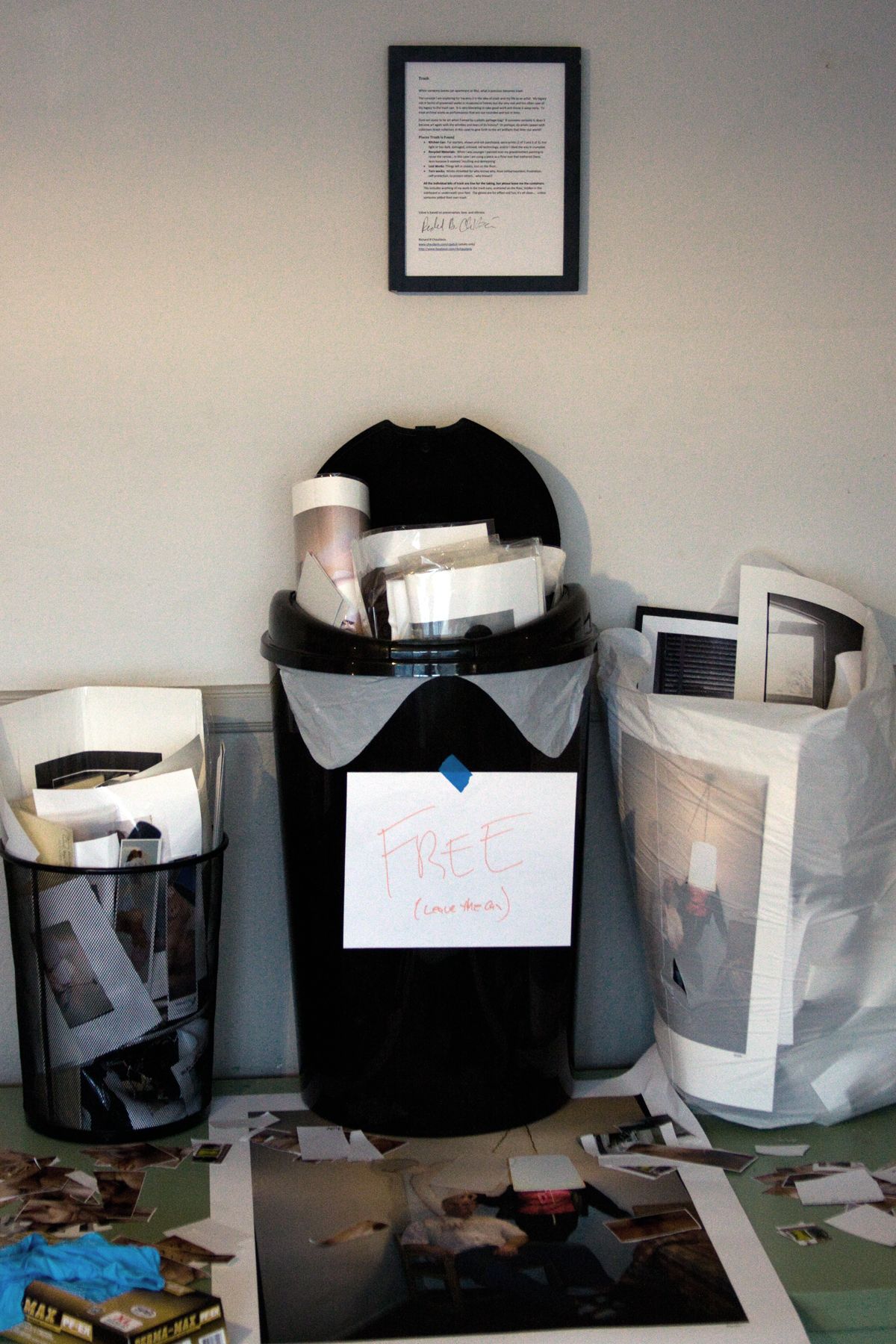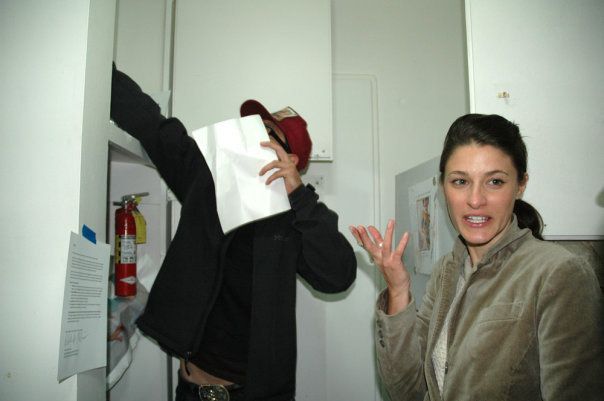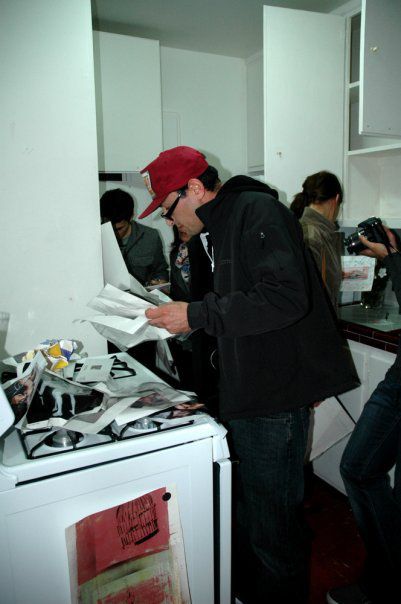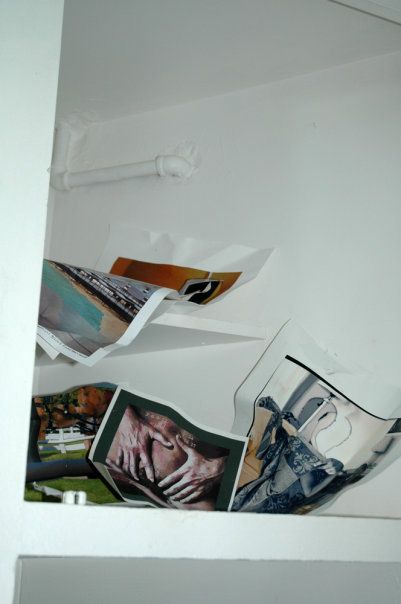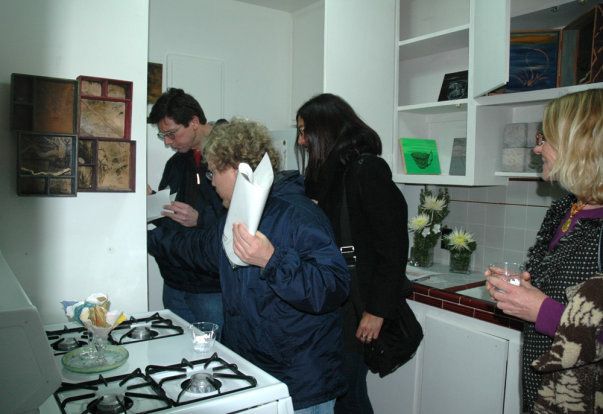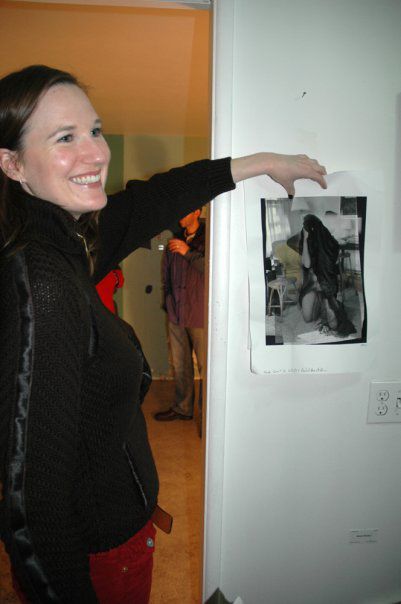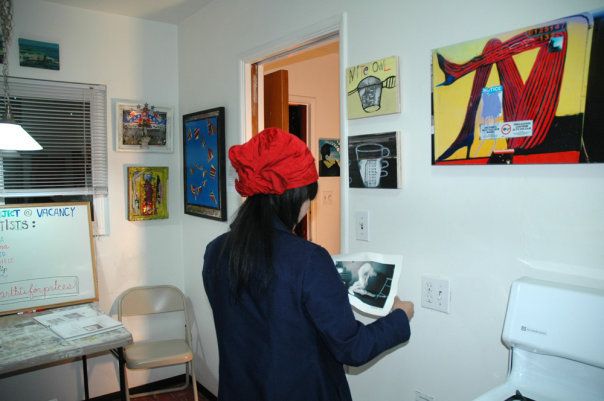Leftovers at Lori Lipsman's Vacancy II, 02/05/2010
The first trash show...


The concept I explored for Leftovers (in Vacancy II conceived, created, and hosted by Lori Lipsman) is the idea of trash and my life as an artist. My legacy not in terms of preserved works in museums or homes but the very real and too often case of my legacy to the trash can. It is very liberating to take good work and throw it away early. To treat archival works as performances that are not recorded and lost in time.
Does art cease to be art when framed by a plastic garbage bag? If someone reclaims it, does it become art again with the wrinkles and tears of its history? Or perhaps, do artists spawn with collectors (trash collectors in this case) to give birth to the art artifacts that litter our world?
Parts of the Installation:
Kitchen Can: For starters, shown and not purchased, extra prints (2 of 3 and 3 of 3), too light or too dark, damaged, unloved, old technology, and/or I liked the way it crumpled.
Recycled Material: When I was younger I painted over my grandmothers painting to reuse the canvas… In this case I am using a one piece as a floor mat that bothered Diana Jeon because it seemed insulting and demeaning to women.
Lost Works: Things left in closets, lost on the floor…
Torn Works: Works shredded for who knows why, from embarrassment, frustration, self protection, to protect others… who knows?
All the individual bits of trash were free for the taking, but I asked people to leave me the containers. This included anything of my work in the trash cans, scattered on the floor, hidden in the sideboard or underfoot. I also supplied gloves for effect and fun; it was all clean… unless someone added their own.
Hank Gross taking both 20x28 pictures ('Lost Work' from top of the fridge and 'Recycled as Floor Mat' from the floor in front of the ‘Small Waste Basket’). Later on, he asked if he could cut the borders off so they fit on his fridge.
Eileen Dieter crumbled a piece to fit into her purse, looked at me with a grin and said 'That’s the idea, isn’t it?' I grinned back.
Richard A Messenger collected some of the Torn Works for use in one of his paintings.
Two female friends slipped unnoticed a couple of nasty 'Torn Works' into a male friend’s pocket.
There was one individual who carefully sorted through all the trash and then took most of the non-nude images.
Another person walked up to me smiling and said he had matched a certificate of authenticity with an image. I latter found all the other certificates of authenticity neatly lined up on the kitchen stove.
I signed a piece from Trash at the collector's request.
At least ¾ of the artwork put into the trash was taken out again and then taken away.
People very much enjoyed rooting for their treasures in the trash.
Unwanted works were discarded, torn, and stepped on. In other words, treated like trash…
I love, very much more; some of the now torn and abused works left over and have incorporated trashing into my art.
I discovered that the value of an art piece is based on preservation, love, and silliness.
The subject of art into trash and back out again has all sorts of permutations. During that year I started painting over my digital works because they had been well shown and were now just taking up space. The readymade frames were a huge inducement to destroy the work underneath. I found myself going full circle and doing to my work what I had done to my grandmother's painting. It has gotten so bad that I now look at all my stored and shown work as canvases rather than anything precious or something I need to look after.
